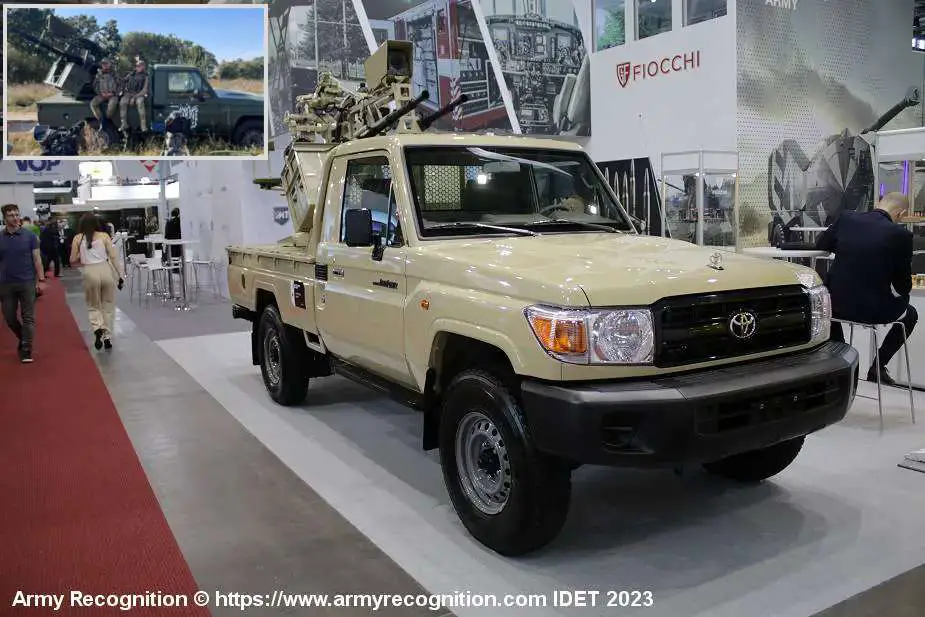- Army
- Conflicts in the world
- Israel - Iran conflict 2025
- Pakistan - India Conflict 2025
- Russia Ukraine War 2022
- Libya conflict day by day
- HAMAS - Israel War 2023
- Operation Serval in Mali French Army
- Sangaris operation Central African Republic
- Sangaris opération militaire République Centreafrique
- Ukraine - Russia conflict
- Syria conflict news
- Defence & Security Industry Technology
- Armies in the world
- Analysis Defense and Security Industry
- Conflicts in the world
- Navy
- Air
Ukraine Boosts Air Defense with Czech Viktor Anti-Aircraft Vehicles in 117th Brigade
As reported by Ukrainian Front on October 12, 2023, the Viktor short air defense system, produced in the Czech Republic, has been added to the inventory of Ukraine's 117th separate Territorial Defense Brigade. This deployment reflects Ukraine's ongoing efforts to enhance its air defense capabilities, as these systems are crucial in safeguarding critical assets like airbases, command and control centers, military equipment, and logistical hubs.
Follow Army Recognition on Google News at this link

The Viktor short air defense system, in service with the Ukrainian Army, was showcased at the IDET 2023 exhibition (Picture source: Twitter and Army Recognition)
Mounted on a Toyota Land Cruiser 70, a vehicle renowned for its durability and off-road capabilities, the Viktor system is developed by the Czech company Excalibur Army to address the growing threat of unmanned aerial systems and drones. It serves as a tangible example of nations' ongoing efforts to improve their air defense systems, guided by lessons learned from real combat situations. This advanced system was showcased at the IDET 2023 defense exhibition, as reported by Army Recognition.
Air defense systems are generally categorized into three main ranges, enabling them to effectively respond to different types of airborne threats: short-range (zero to 10 km), medium-range (up to 50 km), and long-range (covering more than 50 km). This approach contributes to a multi-layered defense against various aerial threats, and it is notably improved when these systems are integrated into a broader network that includes early warning radars.
This integrated strategy enhances target tracking, situational awareness, and coordination in responding to threats while reducing the risk of friendly fire incidents. Additionally, the mobility and rapid deployment of air defense systems hold significant importance in contemporary warfare. These systems need to be readily transportable by a range of means, such as trucks, helicopters, or aircraft, and they should be adaptable to diverse threats, as demonstrated by the selection of weaponry for the Viktor MR-2.
The Viktor MR-2 is armed with the powerful ZPU-2, a Soviet-era twin-barrel anti-aircraft gun built around the 14.5×114mm KPV heavy machine gun. This heavy machine gun boasts nearly twice the energy compared to standard 12.7 mm machine guns. Consequently, the Viktor system can effectively engage a wide range of targets, including drones, aircraft, helicopters, lightly armored vehicles, enemy fortifications, and personnel, at distances of up to 2 kilometers.
The Viktor MR-2 is also equipped with both day and night anti-aircraft sights for targeting aerial threats and a sight for direct fire on ground targets. It features rapid-firing machine guns and carries a ready-to-fire supply of 300 rounds in magazines, along with an additional 300 rounds in spare magazines mounted directly on the gun carriage. Extra rounds can be transported in boxes on the vehicle's hull, and the system includes spare barrels to facilitate rapid changes in the event of overheating.

The Viktor MR-2 is armed with the powerful ZPU-2, a Soviet-era twin-barrel anti-aircraft gun built around the 14.5×114mm KPV heavy machine gun. (Picture source: Army Recognition)


























